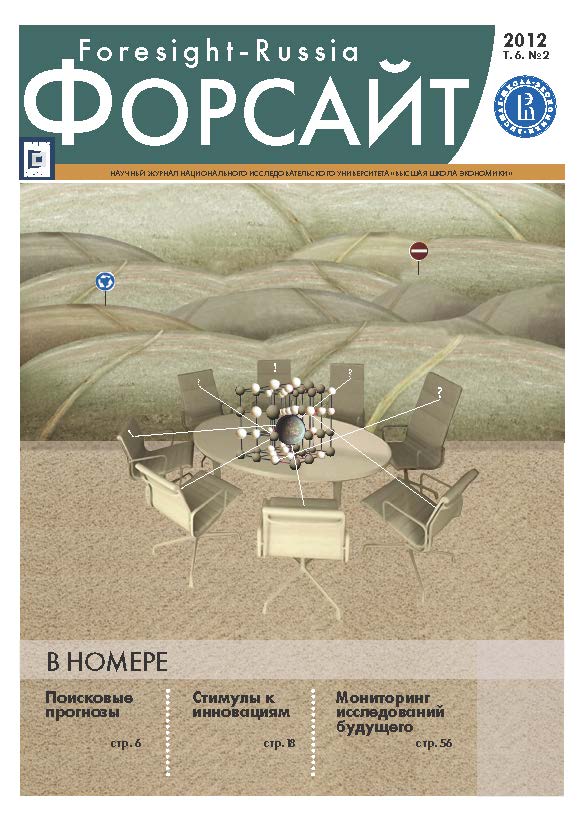Abstract
Dmitry Belousov — Discipline Leader, Center for Macroeconomic Analysis and Short-Term Foreccasting. E-mail: DBelousov@forecast.ru
Alexander Frolov — Expert, Center for Macroeconomic Analysis and Short-Term Foreccasting. E-mail: AFrolov@forecast.ru
Irina Sukhareva — Expert, Center for Macroeconomic Analysis and Short-Term Foreccasting. E-mail: I.Sukhareva@forecast.ru
Address: Office 1308, 47, Nakhimovsky av., Moscow, Russia 117418.
Technology roadmaps are typically used in terms of normative approach to long-term S&T forecasting thus serving as a visual tool to identify optimal ways to reach defined future goals. Nonetheless roadmaps can be applied to exploratory studies as well. The latter are aimed at identifying key potentially transformative events, whose dynamics could be influenced by a wide range of externalities. Trends in some fields appear to dominate and shape movement in other areas. Roadmapping allows visualizing and assessing probabilities of cross-impact between various areas of forecasting thus identifying possible scenario bifurcations as well as new risks and opportunities. This paper describes the exploratory roadmap being developed for the Russian Long-Term S&T Foresight 2030. According to that roadmap, evolution to 2020 closely follows macroeconomic trends. However, in regard to technological development, either the «rapid inflation» scenario or the «gradual way out of the crisis» one, the rate is the same, in our view. After 2020, the dominating role in evolution is expected to shift to «global technologies».
These technologies are grouped into six thematic areas according to countries’ S&T priorities, i.e. energy, transport, information and communications technologies (ICTs), medicine, nanotechnologies, and production systems. The most influential scenario bifurcation in the roadmap emerges from the field of energy. Depending on the actual scenario — «the expansion of alternative energy sources» or «the widespread use of non-conventional hydrocarbon fuels» — the global economy will experience rapid growth or slow stagnation respectively.

